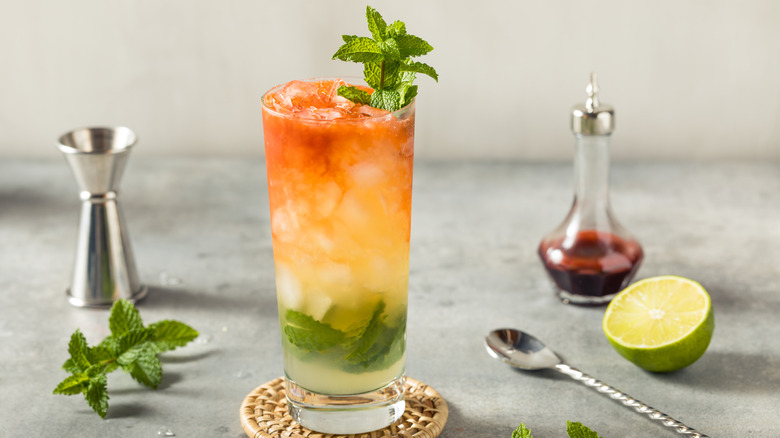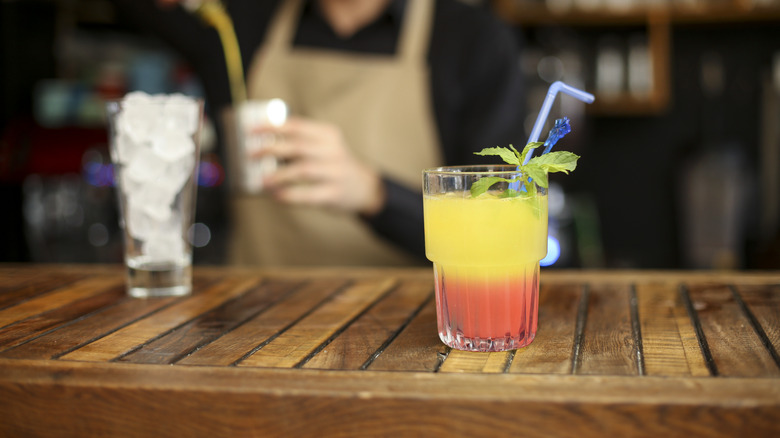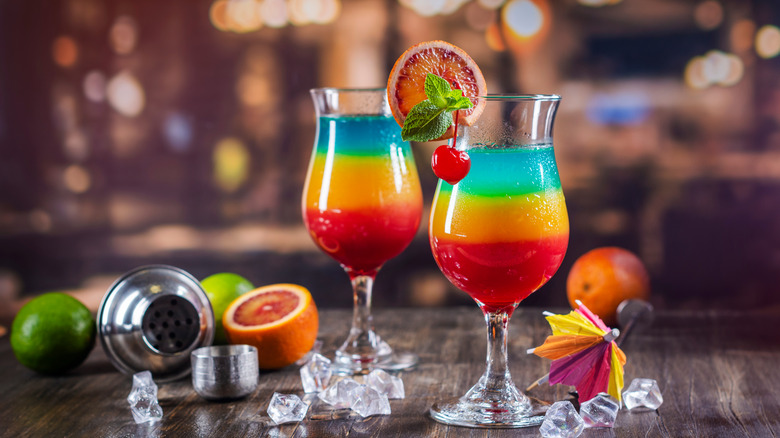How Striped Cocktails Work, And Why You're Seeing Them Everywhere
Layered cocktails, with their mesmerizing gradient colors, are currently enjoying a revival with cocktail enthusiasts and bartenders alike. A treat for the taste buds and a feast for the eyes, layered cocktails are a demonstration of a mixologist's knowledge and skill. Fundamentally, the key to making these cocktails lies in understanding scientific principles, flavor pairing, and visual appeal.
The comeback of layered cocktails can be attributed to a couple of factors: renewed interest in intricate mixology and the widespread popularity of "speakeasies" and other upscale drinking establishments. Freed from the chaotic environment of clubs, where speed takes priority over quality and complexity, bartenders can afford more time and effort to craft more intricate and complicated cocktails. Furthermore, in the age of social media, layered cocktails have more visual appeal when compared to less complicated drinks, making them more popular among those who wish to document their gastronomical adventures online.
Origin and science of the layered cocktail
Layered cocktails have a long and storied history, with their origins going as far back as mid-19th century France, when "pousse-cafe" – French for "push coffee" – were served after coffee at restaurants. Made with alternating layers of various cordials, liquors, spirits, and liqueurs, pousse cafe cocktails are created as much for their visual appeal as their taste. By 1862, five different variations of pousse cafe cocktails were listed in Jerry Thomas' Bartender's Guide, one of the earlier foundational texts of mixology.
The reason drinks can be layered to create stratified colors is due to the difference in weight and density of different cocktail ingredients. For example, syrups, which are denser than liquors, would always sink to the bottom, while spirits such as vodka would gladly float on top. By using specialty spoons and a steady hand, knowledgeable mixologists can create distinct and colorful layers of different liquids in the serving glass. However, not all layered drinks are created with rigid color separation in mind, and many rely on a gradual blending of one ingredient with another to create a stunning visual effect.
Making your own striped drinks
Although it might sound complicated, layered cocktails are pretty easy to make even without any specialized tools. For example, one of the most popular layered cocktails is the tequila sunrise. Mix tequila, orange juice, and grenadine syrup in a glass filled with ice, and watch as the heavier grenadine syrup sinks to the bottom, creating a vibrant color gradient.
Another way to create a layered cocktail is to use a spirit with color, which would create a "float" effect as the spirit would remain on top of the drink while heavier juices and syrups would sink. For example, Empress gin, which is made blue with the addition of butterfly pea flower extract, can be used to create a "float" atop a glass with pineapple juice and passion fruit pulp. As the spirit commingles with the gin, it creates a stunning gradient from orange-yellow on the bottom to purple-blue near the top of the glass.



